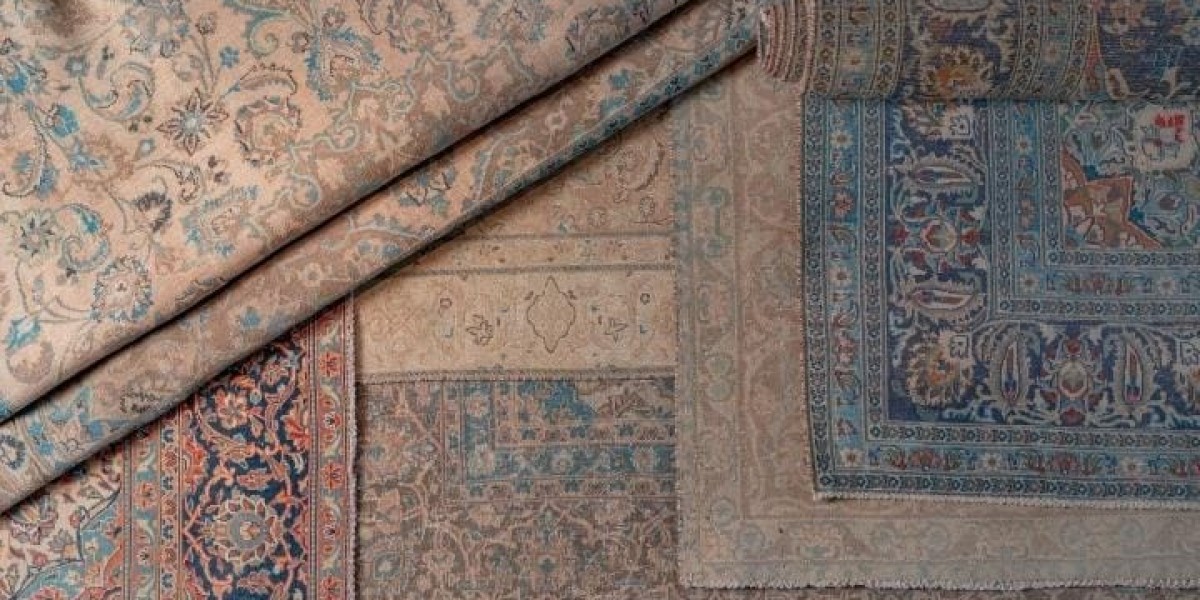In the colorful tapestry of Pakistan's cultural heritage, the art of rug weaving stands out as a testament to the country's rich history, skilled craftsmanship, and artistic finesse. Pakistani rugs, renowned globally for their intricate designs, vibrant colors, and unparalleled quality, hold a cherished place in the realm of decorative arts. These masterpieces not only adorn floors but also narrate stories of tradition, craftsmanship, and cultural identity.
A Tapestry Woven with History
Rug making in Pakistan has a legacy that stretches back centuries, intertwining influences from various civilizations that have left their mark on the region. The art of weaving has been passed down through generations, with each rug carrying a piece of history within its fibers. Traditional designs often showcase motifs inspired by nature, geometric patterns, or cultural symbols, reflecting the diverse influences of Persian, Turkish, and Central Asian origins.
Pakistani rugs are predominantly handcrafted, with skilled artisans dedicating countless hours to each piece. These craftsmen, often from rural areas, have honed their skills over years, employing techniques that have been preserved and refined through time. Their expertise in hand-knotting intricate patterns using high-quality wool or silk results in rugs that are not just floor coverings but works of art that tell stories of their makers and their heritage.
The Artistry Behind Every Knot
One of the defining characteristics of Pakistani rugs is the painstaking process of hand-knotting. Skilled weavers intricately tie each knot, creating a durable and visually captivating masterpiece. The density of knots per square inch often determines the quality and intricacy of the design, with finer rugs boasting higher knot counts and exquisite detailing.
The dyeing process is another crucial aspect, with natural and synthetic dyes used to achieve a wide spectrum of colors. Natural dyes sourced from plants, minerals, and insects impart a unique richness and depth to the hues, while synthetic dyes offer a broader range of shades. The artistry lies not only in the knotting technique but also in the selection and blending of colors, creating harmonious and captivating compositions.
Diversity in Design and Patterns
Pakistani rugs exhibit a diverse array of designs and patterns, each representing a distinct region or cultural heritage. From the floral motifs of Lahore to the geometric precision of Peshawar, and the bold colors of Karachi, these rugs encapsulate the essence of Pakistan's multifaceted identity. The designs often carry symbolic meanings, with motifs representing elements of nature, religious beliefs, or historical events, adding layers of significance to the artwork.
The famous "Bokhara" and "Persian" designs are among the most sought-after styles, characterized by their symmetrical patterns and deep, rich colors. Tribal rugs, such as those crafted by Baluch or Pashtun communities, feature bold geometric designs and earthy tones, reflecting the nomadic heritage of these groups. Each design tells a unique story, preserving cultural narratives and traditions within the threads.
A Blend of Tradition and Modernity
While traditional craftsmanship remains the cornerstone of Pakistani rug making, contemporary influences have also made their mark on the industry. Modern interpretations of classic designs, experimentation with colors, and fusion of traditional techniques with contemporary aesthetics have widened the appeal of Pakistani rugs in today's global market.
Artisans and designers collaborate to create innovative pieces that cater to evolving tastes while preserving the essence of tradition. The adaptability of Pakistani rug making to modern trends ensures that these timeless creations continue to captivate audiences worldwide.
Preserving a Treasured Legacy
Despite the allure of mass-produced rugs flooding the market, the value of authentic, handcrafted Pakistani rugs endures. Their uniqueness, quality, and cultural significance make them coveted possessions that are passed down through generations, becoming cherished heirlooms.
Efforts to preserve this artisanal heritage and support local craftsmen are crucial in sustaining this age-old tradition. Organizations, cooperatives, and initiatives aimed at empowering weavers, promoting fair trade practices, and preserving traditional techniques play a pivotal role in safeguarding the legacy of Pakistani rug making for future generations.
In Conclusion
Pakistani rugs stand as exquisite manifestations of artistry, culture, and tradition. These magnificent creations not only enhance living spaces with their beauty but also serve as windows into Pakistan's rich heritage. With their intricate designs, meticulous craftsmanship, and timeless elegance, Pakistani rugs continue to weave stories that transcend time, connecting us to a heritage crafted with care, skill, and profound cultural significance.








